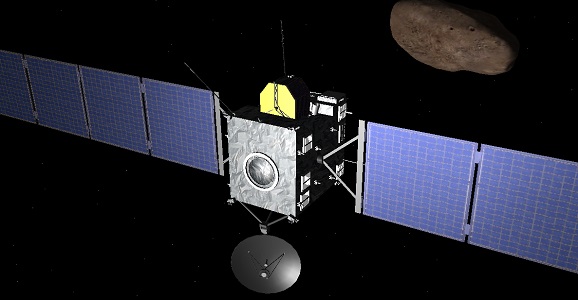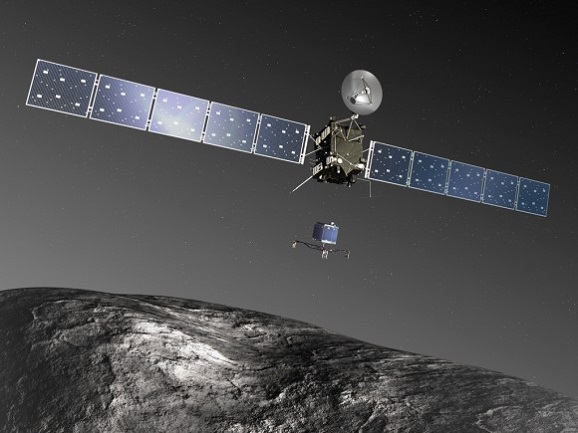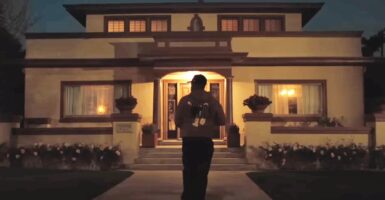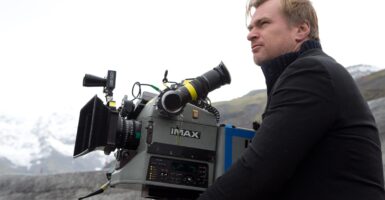ESA’s Rosetta Probe Will Wake Up And Head For A Comet Next Month
This article is more than 2 years old
 Earlier this month, NASA ended the short retirement of the asteroid hunter NEOWISE, putting it back on the prowl. Meanwhile, the European Space Agency (ESA) will soon see one of their own long-quiet spacecraft coming back to life, as the Rosetta Lander will soon wake up from its deep slumber to bring its 10-year mission to its long-awaited next step: performing the first ever soft landing on a comet. The next time someone tells me I’m taking too long to do something, I’m going to refer them to the Rosetta before getting back to my ice cream mountain climbing.
Earlier this month, NASA ended the short retirement of the asteroid hunter NEOWISE, putting it back on the prowl. Meanwhile, the European Space Agency (ESA) will soon see one of their own long-quiet spacecraft coming back to life, as the Rosetta Lander will soon wake up from its deep slumber to bring its 10-year mission to its long-awaited next step: performing the first ever soft landing on a comet. The next time someone tells me I’m taking too long to do something, I’m going to refer them to the Rosetta before getting back to my ice cream mountain climbing.
Rosetta launched back in March 2004, on a mission to reach and study in detail the comet 67P/Churyumov-Gerasimenko, or Churyumov-Gerasimenko for short. It performed a Mars flyby back in 2007 and a flyby of the asteroids 2867 Šteins and 21 Lutetia in 2008 and 2010, respectively, sending back images of both. It went into hibernation mode in 2011 and will stay that way until January 20, 2014, when it will set a direct course for the comet, which it is expected to reach at some point in August. It will then float around in a mapping orbit for the next few months. We all know there’s nothing more exciting than a mapping orbit, right?
Oh, except for landing on a freaking comet, that is. In November, the spacecraft will release Philae, an arachnid lander with a host of scientific instruments on board. Due to the low gravity of the comet, Philae is equipped with two harpoons that will anchor it to the surface, where its feet will pop out and drill into the comet, securing the craft in place.
At this point, another drill will be used to snatch up samples, analyzing them on the spot before sending the information back to Earth. The point is to study both the surface and the subsurface of the comet, figuring out all of its innards and its chemical composition. It will stay attached to the comet and study the changes the comet experiences as it heads back towards Earth and the sun, which doesn’t take too kindly to icy things flying around without being invited.
Below is an artist’s representation of what the probe will look like as it makes its descent onto the comet, And then you can watch a silent video with a CGI version of the landing. We assume they also have a tea leaf reading of the landing, but are saving that one until closer to the big date.

Stay tuned to the Rosetta’s Twitter page for further updates beyond just “Still sleeping.”












